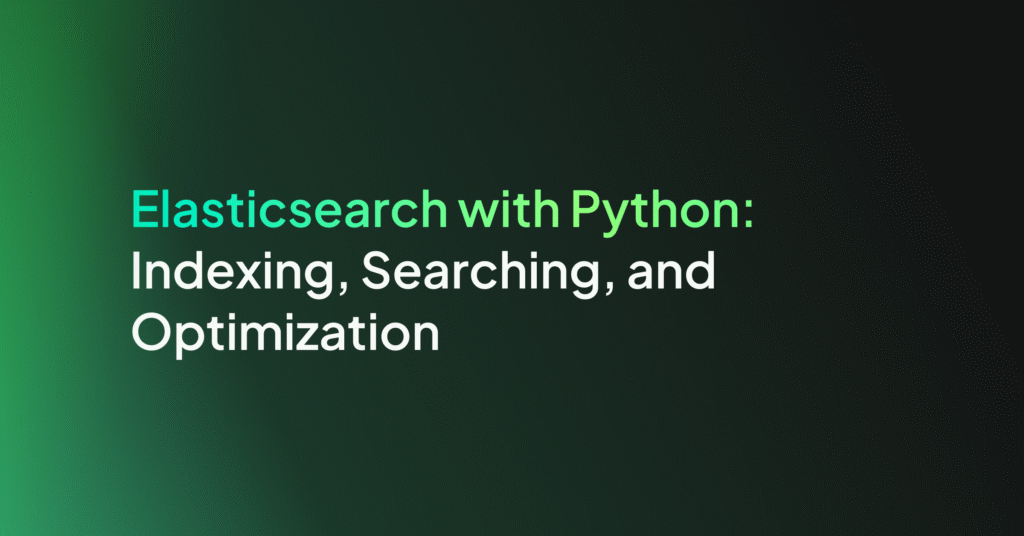Elasticsearch vs. Splunk: 6 Key Differences and How to Choose

Elasticsearch vs. Splunk: Key Differences
While both tools are useful for managing data, there are some significant differences.
1. Setup and Maintenance
Elasticsearch, being an open-source platform, requires a certain level of technical know-how for setup and maintenance. While it offers a high degree of customization and scalability, it also demands a competent team to manage its complex architecture. On the other hand, Elasticsearch’s open-source nature allows for more flexibility and cost-effectiveness, especially for large-scale deployments.
Splunk, in contrast, is a proprietary platform that offers a more straightforward setup process. It comes with comprehensive documentation and support, making it easier for businesses without extensive technical expertise to adopt. However, the trade-off is that Splunk comes with a higher total cost of ownership due to its licensing costs.
2. Data Ingestion
Elasticsearch is adept at handling structured and semi-structured data, such as JSON documents. It can also process unstructured data, but it requires additional configuration and processing. Elasticsearch’s data ingestion pipelines allow for data enrichment and transformation, providing a high degree of flexibility.
Splunk, on the other hand, is designed to ingest any type of data seamlessly, whether structured, semi-structured, or unstructured. It automatically recognizes a wide variety of data types and provides easy-to-use tools for custom data parsing. However, Splunk’s data ingestion capabilities come at a cost, as its licensing fees are based on daily data ingestion volumes.
3. Indexing
Indexing is the process of organizing data so it can be searched efficiently. Elasticsearch uses a distributed, multitenant-capable full-text search engine with an HTTP web interface and schema-free JSON documents. It is particularly efficient at full-text search and analytics on structured data. It also provides scalability and real-time search, making it suitable for big data applications.
Splunk, in contrast, uses a proprietary indexing system designed to ingest and index any form of machine data. It is well-suited for time-series data indexing and allows for in-depth data exploration and analysis.
4. Data Visualization
Elasticsearch, in conjunction with Kibana, offers robust data visualization capabilities. Kibana is an open-source data visualization and exploration tool used for log and time-series analytics, application monitoring, and operational intelligence use cases. It offers a range of charts, graphs, and dashboards, all of which are highly customizable.
Splunk also provides strong data visualization features. Splunk’s dashboards are interactive and can be easily customized to meet specific needs. They offer a wide variety of visualization options, including charts, maps, and tables. Additionally, Splunk offers machine learning capabilities that can enhance the visualization experience, making it easier to identify patterns and trends in your data.
5. Query Language
Elasticsearch uses a language known as Query DSL, based on JSON, to define and execute queries. While it offers powerful querying capabilities, it can be complex and may require a steep learning curve, especially for those not familiar with JSON programming.
Splunk uses a proprietary, easy-to-use language called Search Processing Language (SPL). SPL’s syntax is more straightforward, making it easier to learn and use. It is designed to handle complex search operations and provides extensive capabilities for filtering, manipulating, and visualizing data.
6. Pricing and Licensing
Elasticsearch is open-source, meaning that its basic version is free to use. However, for advanced features like machine learning, alerting, and anomaly detection, you would need to opt for the paid subscription plan, starting at $95 per month.
Splunk operates on a more conventional licensing model based on data volume. It charges based on the amount of data ingested per day. While this model can offer predictability, it can also become quite expensive for businesses dealing with large volumes of data.
Splunk vs. Elasticsearch: How to Choose?
Choosing between Elasticsearch and Splunk largely depends on your organization’s specific needs, budget, and technical expertise.
If cost-effectiveness is your primary concern, Elasticsearch’s open-source model may be more appealing. Its rich features and impressive scalability make it a favorite among tech-savvy users and businesses dealing with massive data sets. However, it might not be the best option for organizations that lack programming expertise.
On the other hand, if ease of use and advanced functionalities are your top priorities, Splunk could be the better choice. Its intuitive interface, powerful search capabilities, and advanced data visualization features make it useful for businesses of all sizes. However, Splunk’s relatively higher cost may be a barrier for some companies.
Coralogix Gives You the Best of Both Worlds
Running your own ELK cluster often requires many hours of setup and maintenance, not to mention troubleshooting when things go wrong and dealing with all the underlying infrastructure. Splunk, as mentioned, can be exorbitantly expensive.
Coralogix simplifies log management and monitoring by eliminating the operational complexity of the ELK Stack, offering advanced machine learning insights, real-time alerting, and cost optimization. As a full SaaS platform with easy integration, and user-friendly dashboards, it provides a comprehensive, efficient alternative for businesses seeking improved observability with minimal setup and maintenance, making it a cost-effective and insightful solution for log analysis and more.
So if you are looking for a fully managed yet affordable SaaS option, Coralogix is for you.




